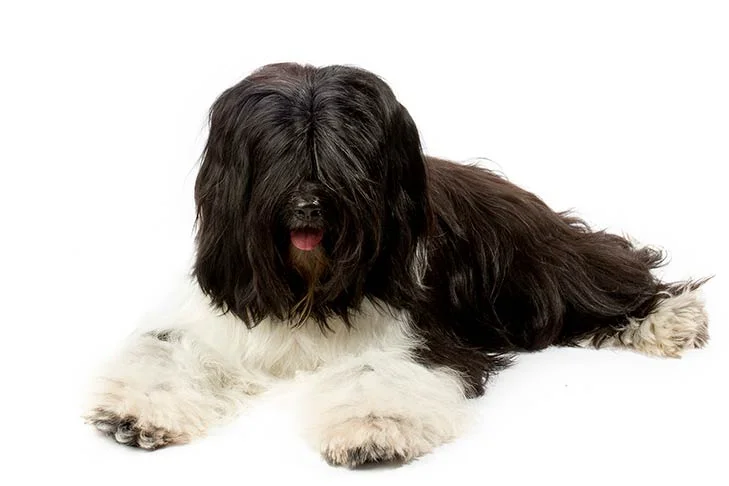The Tibetan Terrier, often known as the “Holy Dog of Tibet,” is a venerable companion and watchdog who has long been connected to Buddhist monasteries. The TT is a small to medium-sized dog with’snowshoe’ feet that is thickly covered and loving. Tibetan Terriers, who are at the lower end of medium-sized breeds and just slightly larger than their smaller relative, the Lhasa Apso, stand approximately 15 inches tall at the shoulder and weigh between 20 and 24 pounds. The stunning and abundant double coat, which is woolly underneath and has a long, exquisite topcoat, is a breed trademark. The broad, flat “snowshoe” feet that are distinctive to TTs among canines were developed over ages to aid them in navigating the snowy, hilly terrain of their native area.
Tibetan Terrier
Average sizes and life
expectancy of the breed.
Height
14-17 inches
Weight
18-30 pounds (male)
slightly smaller (female)
Life Expectancy
15-16 years
Breed Traits & Characteristics
About the Breed

Owning a dog is not just a privilege; it’s a responsibility. They depend on us for, at minimum, food and shelter, and deserve much more. When you take a dog into your life, you need to understand the commitment that dog ownership entails.
 Health
Health
Recommended Health Tests From the National Breed Club:
- Hip Evaluation
- Ophthalmologist Evaluation
- NCL DNA Test
- Primary Lens Luxation(PLL)
 Grooming
Grooming
 Exercise
Exercise
 Training
Training
 Nutrition
Nutrition
History
Tibetan Terriers are Tibetan, but they are not true terriers—not by blood, temperament, or job description—so the breed label only does half the job. This essentially Asian dog was hastily given the label “terrier” by Westerners, and the name stuck. TTs are one of the Tibetan dog breeds connected to Buddhist monasteries and the Dalai Lama. They are an ancient breed that was formed in the beautiful solitude of the Lost Valley. Although TTs are most famous for being companions and watchdogs, they have also served as herders and flock guardians throughout their long history.


